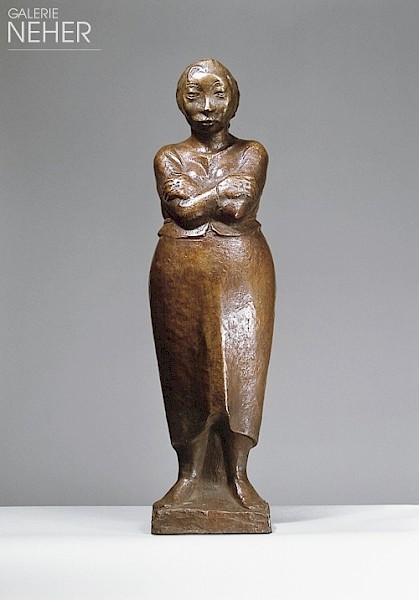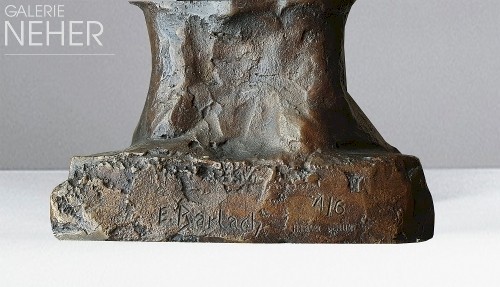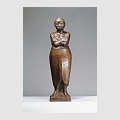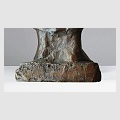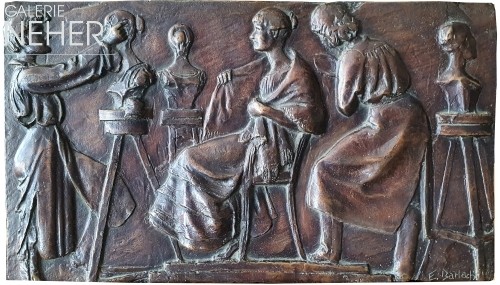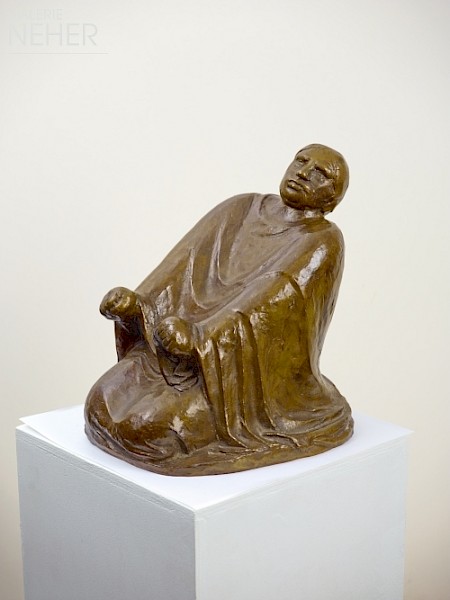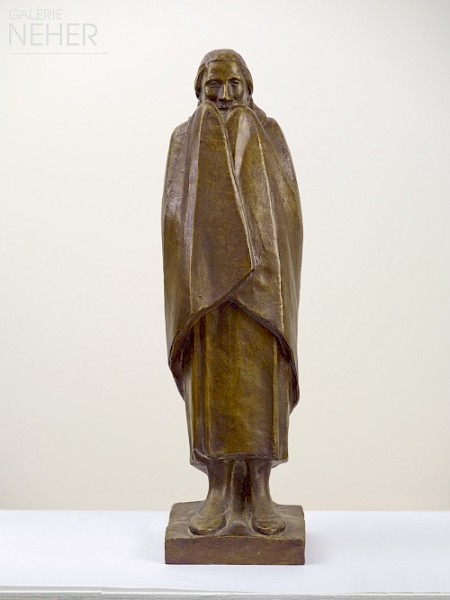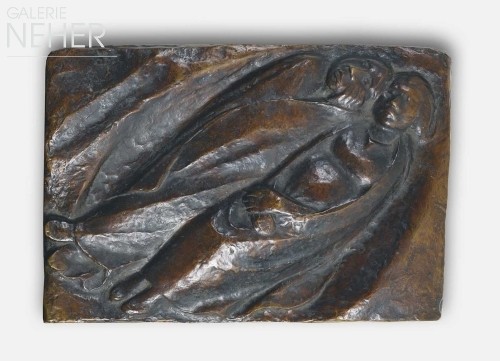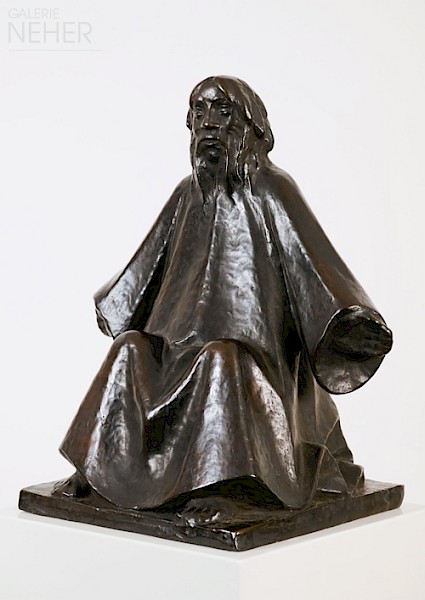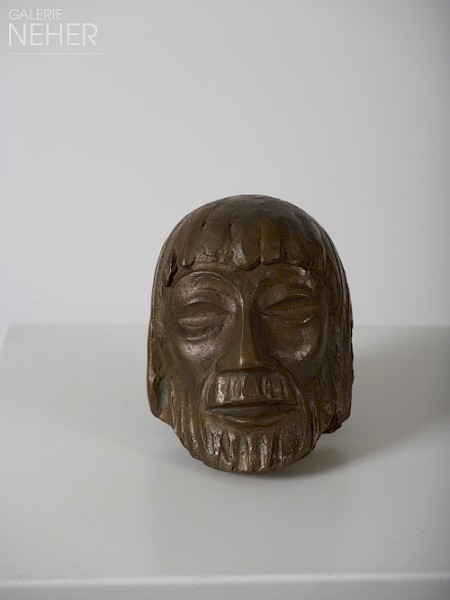About the work
Ernst Barlach is among the most versatile German artists of his generation: he made a name for himself as a sculptor, a draughtsman and a graphic artist, but also as an author. His sculptural work, including wood sculptures and bronze casts, is located between realism and Expressionism and is associated with many honours and prizes.
Die Frau mit untergeschlagenen Armen originated in 1922, the year in which his monument of a Schmerzensmutter (Mother Mary in Sorrow) was also dedicated in Kiel. The artist produced his female figure with contemporary clothing in a closed, block-like design that leaves little room for details. The gestures and facial expression of the young woman present her as reserved and unapproachable, almost a little defiant. No stirring of any kind animates her steadfast body with the arms crossed protectively across her chest, and her physiognomy also betrays no emotion whatsoever. Nonetheless, both her facial features and her posture suggest determination and assertiveness.
It is the enigmaticness and impenetrability of the figures represented, in combination with the power of the artistic coherence, that distinguish the particular quality of Barlach’s sculpture.
Text authored and provided by Dr. Doris Hansmann, Art historian
Studies of art history, theater, film and television, English and Romance Languages at the University of Cologne, doctorated in 1994. Research assistant at the Art Museum Düsseldorf. Lecturer and project manager at Wienand Verlag, Cologne. Freelance work as an author, editor and book producer for publishers and museums in Germany and abroad. From 2011 chief editor at Wienand Verlag, from 2019 to 2021 senior editor at DCV, Dr. Cantz’sche Verlagsgesellschaft, Berlin. Numerous publications on the art of the 20th and 21st centuries.
